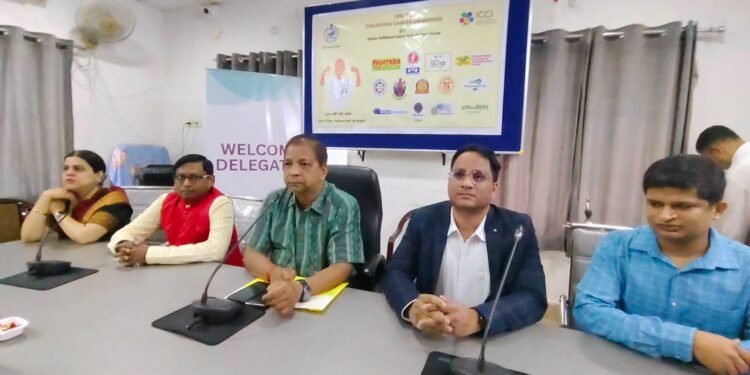Bargarh (Odisha)- Bargarh witnessed a landmark moment in rural healthcare as a District-Level Continuing Medical Education (CME) program on childhood cancer unfolded at the Conference Hall of CHC (Old DHH). This initiative, dedicated to strengthening grassroots cancer care, carried the message that early detection and timely intervention can mean the difference between life and death for young patients. For a district known for its strong community-driven movements, the CME represented both a promise and a challenge: to ensure that childhood cancer is no longer a silent killer in villages and small towns.
The program was inaugurated by Dr. Kubera Chandra Mahanta, Chief District Medical & Public Health Officer, who underscored the importance of building capacity among doctors and health workers outside urban hospitals. “Childhood cancer is curable in many cases, provided it is recognized early and treated without delay. Programs like this are invaluable because they strengthen the system at the first point of contact, which is often in rural health centers,” he said, setting the tone for the day’s deliberations.

The CME was not merely an academic exercise but a collaborative mission. It was jointly organized by Umeedein Odisha, Fighters Group, Bargarh Cares, Indian Childhood Cancer Initiative (ICCI), Cankids-Kidscan, UISCF, Lions Club Lotus Bhubaneswar, Rotary Club of Bhubaneswar Smile, Sanjog, Kriaa Foundation, Mahima, and other volunteer collectives. The presence of such diverse organizations highlighted a powerful truth: defeating childhood cancer in India’s rural heartland demands more than medical expertise—it requires partnerships, empathy, and grassroots action.
Pediatric hemato-oncologists of national repute anchored the technical sessions. Prof. Dr. Saroj Panda of SUM Hospital explained that even basic awareness among parents and frontline health workers could drastically improve outcomes. “The challenge is not always the availability of treatment but the delay in reaching the right place at the right time. When a case is referred late, the chances of survival shrink dramatically,” he observed. His views were echoed by Prof. Dr. Palas Das from KIMS Hospital, who reminded participants that “Children are not miniature adults. Their cancers behave differently and must be treated with specialized protocols. Recognizing this distinction is the first step toward saving young lives.”
“The tragedy is not always the lack of treatment facilities—it is the delay in reaching them. If rural doctors can identify red-flag symptoms early, we can change the story for hundreds of families.”
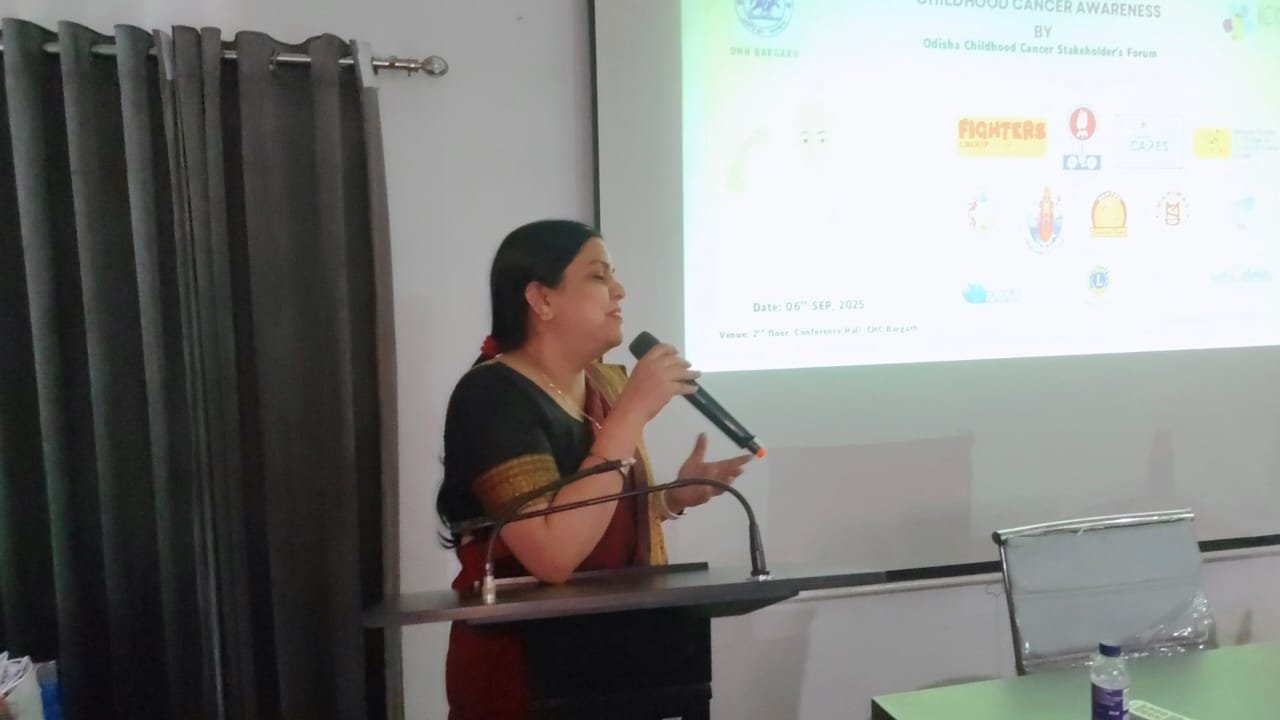
Adding to these perspectives, Assistant Professor Dr. Debasish Sahu of AIIMS Bhubaneswar said that structured referral mechanisms were as important as medicines. “We often see children brought to tertiary hospitals at very advanced stages. A well-trained district doctor who can suspect cancer and immediately refer the patient could change the story for hundreds of families,” he remarked. Dr. Nirmalya Deo Pradhan of Bagchi Sri Shankara Cancer Centre & Research Institute highlighted counseling as a neglected yet vital aspect. “Families are devastated when they hear the word cancer. Rural doctors must be trained not just to recognize symptoms but also to guide parents with clarity and compassion,” he explained.
Pediatricians, including Dr. Arjun Meher, Dr. Ashish Satapathy of Bikash Multi-Speciality Hospital, and Dr. Amit Bhoi, lent their voices to the discussion by pointing out that myths, financial constraints, and lack of awareness continue to delay treatment. Their testimonies painted a realistic picture of the hurdles faced in districts like Bargarh, where parents often turn to traditional healers before considering hospitals, losing precious time in the process.
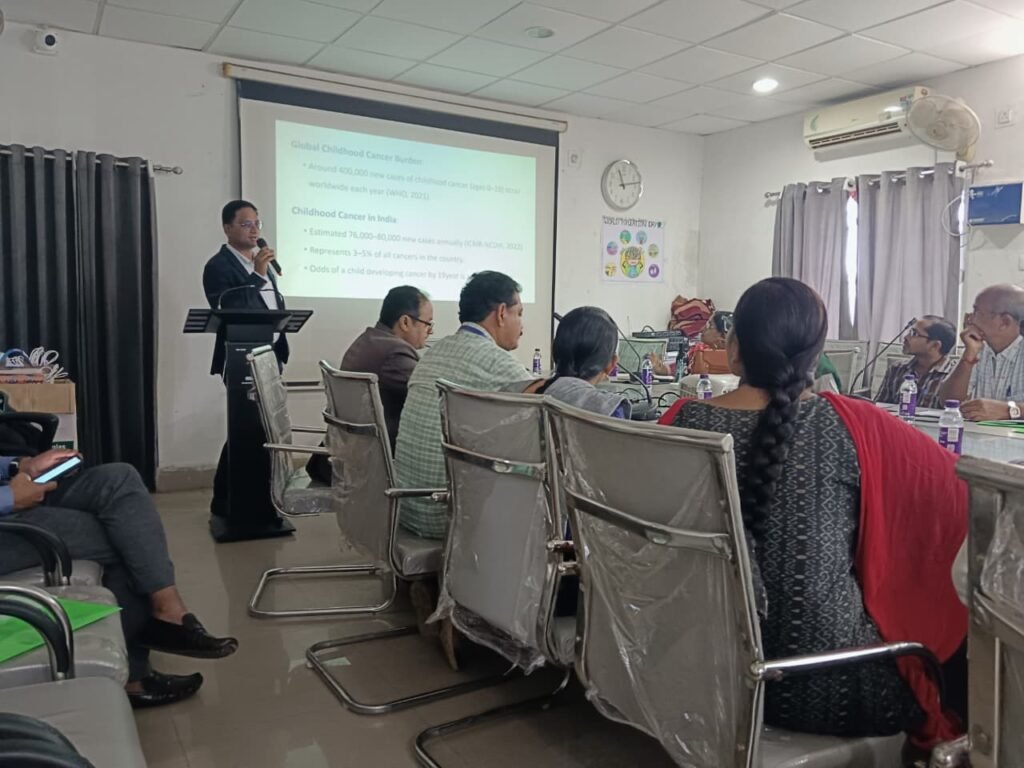
Beyond the medical discourse, the CME resonated with a larger vision of equity. Nitai Gour Panigrahi, Chairman of Umeedein and ICCI representative, summed it up succinctly: “Timely recognition and referral of childhood cancer significantly increase survival chances. This CME is preparing doctors working across rural Bargarh to shoulder that crucial responsibility. What we are seeing here is the foundation of a model that can be replicated across rural India.”
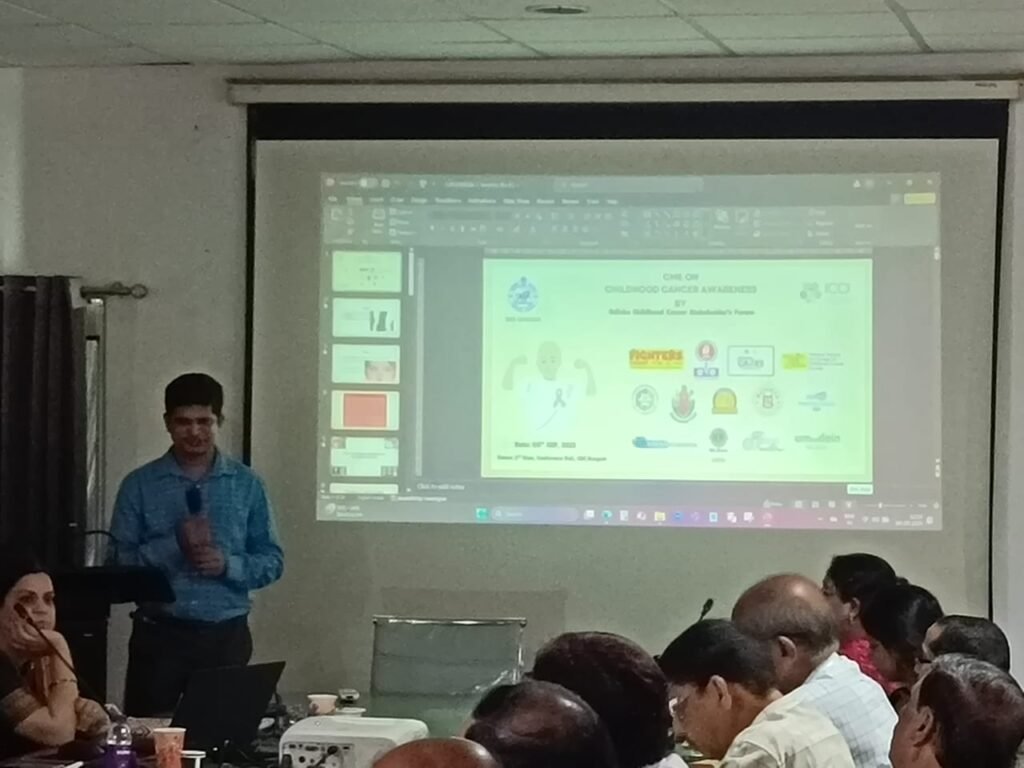
For Bargarh, the initiative also carried a symbolic significance because of its strong tradition of grassroots mobilization in healthcare. Aswini Kumar Darjee, Chairman of Fighters Group Trust, reflected this spirit in his remarks. “This initiative is not just about one program; it is about decentralizing specialized cancer care in Western Odisha. By empowering district doctors and CHC heads, we are creating a sustainable grassroots model of childhood cancer care. That is how we ensure that a child born in a village has the same right to timely treatment as a child in a city hospital,” he said with conviction.
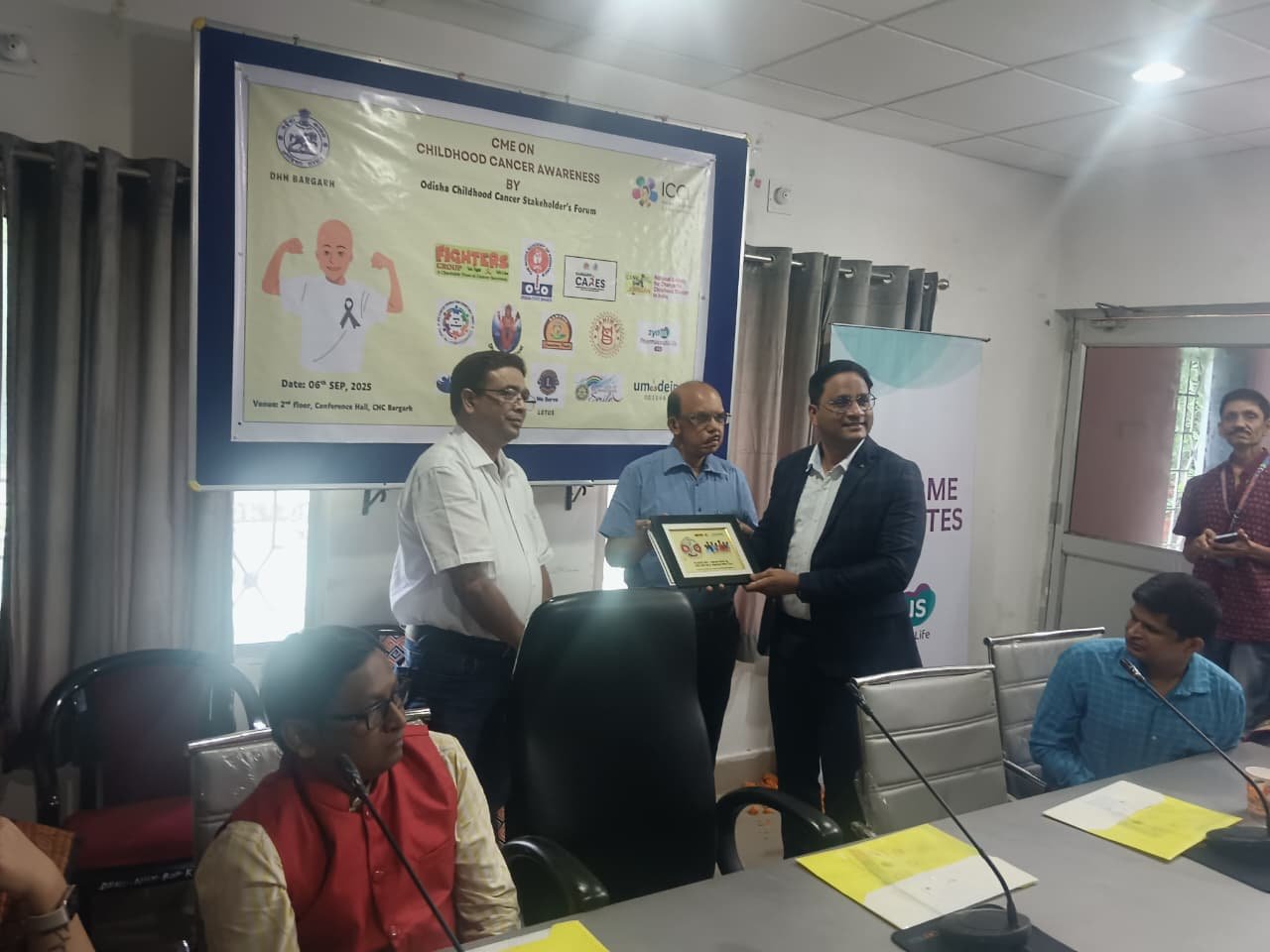
The program drew a large gathering of government and private pediatricians, CHC medical officers, block-level health leaders, and volunteers. Their participation reflected both the scale of the challenge and the strength of collective commitment. Discussions extended beyond clinical protocols into practical strategies such as awareness campaigns.
As the day concluded with a vote of thanks delivered by Mrs. Ashima Bisoi, General Secretary of Fighters Group, the atmosphere carried a sense of resolve. The CME was more than an academic training session—it was a community declaration that childhood cancer would no longer remain hidden or neglected in rural Odisha. It stood as a reminder that when doctors, institutions, volunteers, and communities come together, even the toughest battles can be fought with courage and hope.


